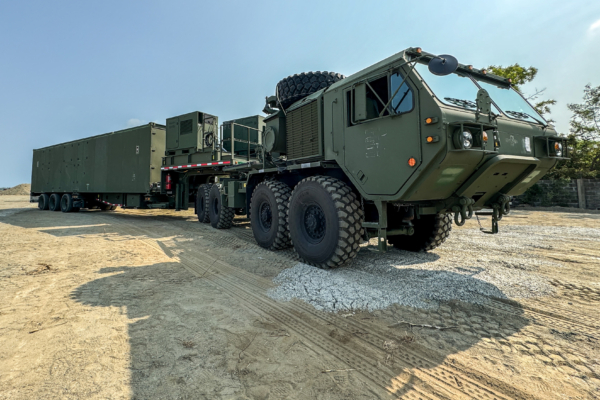In April this year, the US military deployed a medium-range missile system that can launch Tomahawk cruise missiles on the island of Luzon during the US-Philippines joint military exercise. China’s concern over the land-based missile launcher is growing, with Beijing worrying that if permanently deployed, it will significantly alter the balance of power.
On April 15, the US Indo-Pacific Command announced on its official website that the US Army’s 1st Multidomain Task Force (1st MDTF) deployed the “Typhon” missile system with medium-range strike capability for the first time in northern Luzon in the Philippines, calling this deployment a milestone.
According to a report by Nikkei Asia on August 3, Chinese diplomats in Washington have been in contact with sources to learn more details about the deployment of the “Typhon” missile launcher in Luzon.
A Chinese diplomat, who requested anonymity, told Nikkei Asia that the extended presence of the land-based missile launcher in the Indo-Pacific region for exercises is causing concern in Beijing.
The US Navy News reported on April 15 that the US military dispatched the first Multidomain Task Forces (MDTF) Strategic Fires Battalion (SFB) from the US mainland, which arrived in the Philippines on April 7 by C-17 transport aircraft with the codename “Typhon” for the deployment of the US medium-range missile system in northern Luzon.
This is the first appearance of the system in the First Island Chain. The range of the medium-range missile can reach over two thousand kilometers, reaching the southeast coastal areas of China, and the sensitive South China Sea and Taiwan Strait regions. Experts view this as the US military signaling its military strength in the Indo-Pacific region to deter China.
Each launcher of the “Typhon” missile system is equipped with 4 units of the MK41 Vertical Launch System, capable of launching land-strike “Standard-6” missiles and Tomahawk cruise missiles. Both types of missiles could hinder China’s air defense systems in the opening stages of a potential conflict in the Taiwan Strait, allowing the US Navy to subsequently deploy large warships.
It is currently unclear where the next deployment location of the “Typhon” missile launchers on Luzon Island will be after the annual Shield military exercise between the US and the Philippines.
During the US-Japan Foreign and Defense Ministerial “2+2” meeting, both sides agreed to increase the “bilateral presence” on the southwestern islands of Japan. Another Chinese defense official told Nikkei that the statements at the US-Japan “2+2” meeting raised Beijing’s concerns about the possible deployment of medium-range missiles to Japan.
On July 29, the US and Japanese foreign and defense ministers held a Foreign Affairs and Security “2+2” meeting expressing concerns about China’s “provocative” actions in the South China Sea and the East China Sea, joint military exercises and patrols by China and Russia, as well as the rapid expansion of China’s nuclear arsenal.
The Chinese Ministry of Foreign Affairs expressed strong dissatisfaction with the US-Japan “2+2” meeting and other negative remarks related to China at international conferences in Tokyo on July 31.
US Ambassador to Japan Rahm Emanuel, in an interview with Bloomberg, highly praised the announced plans from the US-Japan meeting, including establishing a command and control center in Japan, joint weapon research and development and production with Japan, and regular trilateral military exercises involving the US, Japan, and South Korea.

